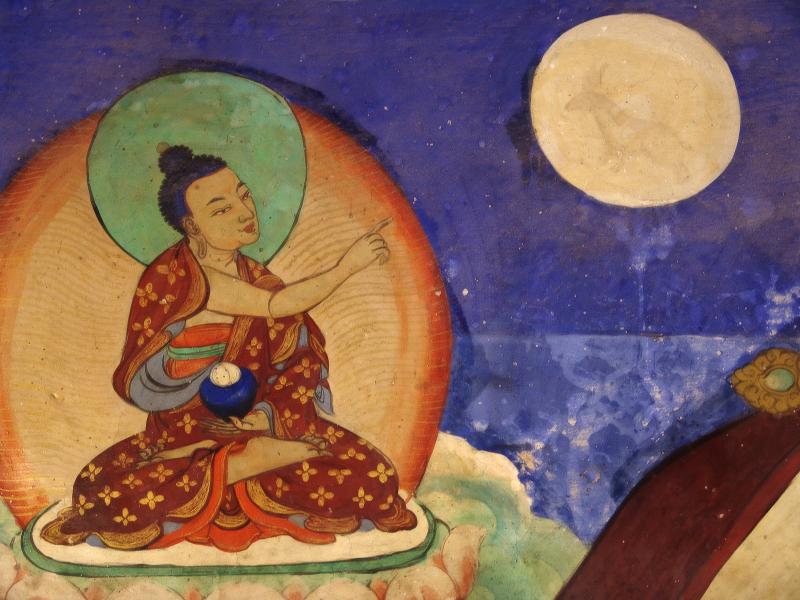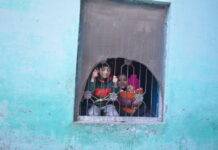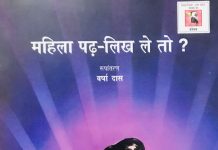Animal Intimacies: Beastly Love in the Himalayas unravels the complex layers of modernity, superstition, faith and tradition in the villages of central Himalayas.
Revathi Krishnan is an Anthropologist based in Madurai.

How beautiful it is to read an anthropological account that is not just rich in its descriptive detail but is composed in a way that anybody who enjoys reading a good story can relate to it. When an anthropologist goes to a distant land, meets with people whose stories she plans to tell, lives amidst the local culture and begins to feel the pulse of the environment- only then is she able to tell it all as if it were an engaging tale and not merely a resource book to be stored on a dusty rack of a library.
Anthropologist Radhika Govindrajan’s book Animal Intimacies: Beastly Love in the Himalayas. This is a book that is born out of her detailed insight and her capacity to look at the human-nature bond with tenderness.
In the book, she talks about how the state of Uttarakhand has been one where people have been quite used to and comfortable with the proposition of living at peace with nature. She talks about how monkeys, a wide range of birds, tigers and other animals along with a wide diversity of plants have been an integral component of the lives of people in Uttarakhand.
There is a particular incident that the author narrates just in order to make it clear how the economic backwardness of the state along with resource constraint have made people in the state look at visitors from the metros with doubt. An old man recalls how monkeys within the state were utterly innocent whereas how monkeys that translocated to Uttarakhand from other states had all the vices of human beings.
The criminality present in these ‘foreign’ monkeys is representative of the anguishes that the indigenous community has about people from the Indian planes- who don’t only have better access to jobs and healthcare but also to education, development, empowerment and financial advantages. A wide range of basic facilities such as sound healthcare, quality higher education, year-around access to clean drinking water and secure sources of employment are among the major reasons why the male youth of the state migrates to other states. Migration of the youth to other states in the search of livelihoods at a time when there is adversity in the state and it is being increasingly viewed as an esoteric land where the urbane elite go to spend their summer holidays, the corporates build luxury resorts and the real estate robs them of their land and already scarce resources.
On a day to day basis, how does a local villager look at the well-endowed tourist who spends on a holiday, lives luxuriously amidst all modern facilities, clicks beautiful photos on his phone camera and then conveniently returns to his urban and comfortable existence while he struggles to fetch water from mountain stream kilometers down, manage quality education for his children, find affordable healthcare for his old parents and find a job in his own state?
Govindrajan would tell us that the life of the average Dalit person is full of hardship and that with rising costs, it becomes difficult to sustain oneself even in a village. A Dalit woman named Deepa would remind us that while there was no water for the villagers to drink, the real estate would extract large quantities and leave the springs empty. The paradox of the state is one that can easily be experienced as Govindrajan takes us along this narrative.
The idiom of the monkeys that resurfaces in the book is also a deeply existential one, the monkey represents one who has had to leave behind his roots and venture into to a new destination. The vices, the wrong practices, the indulgences, the corruption have slowly become part of his being. The local people experience a deep sense of loss and fear that they will find it impossible to reside in their own village if the cost of living expands at such a high rate, their state does little towards employment and affordable healthcare and if the urban part of the nation snatches away all their resources. The book explores a wide range of issues about livelihood in Kumaon, the scarcity of resources, the relationship between humans and animals and the anguish that local people experience in the context of people from the plains. One of the deeply fascinating things about this book is that the author takes us beyond the binaries of rationality-modernity and tradition.
She describes in depth the sacrificial traditions of the community where animals are reared to be sacrificed but also doesn’t stop us from seeing how the women (who largely perform the sacrifice) are also the ones who take care of them like their own children). She also makes us question whether years of performing animal sacrifices really make us immune to their pain.
This takes the debate beyond superstition and modernity and empowers us to think of sacrifices and its societal symbolism in a more nuanced manner. She talks about many more nuanced issues such as gender and sexuality, the complex domestic equations that shape a woman’s life in the lap of the mountains, the overwhelming presence of women in all domestic and agricultural tasks, the lack of eve basic facilities, the way they look at the metropolitan sites as both capable of opportunity and vice etc.
The beauty of her book is not only its detailed ethnographic encounter but the tenderness that comes across through every page. This is an extraordinary work that is inter-disciplinary and cuts across disciplines like politics, sociology and gender studies. The five years she has spent unfolding the complexity of the Kumaoni life, interacting with people and composing this wonderful book- are truly worth an attentive read.
Animal Intimacies is a book that reminds us of a governance system that is sensitive to the ecosystem of the state, the distinct identity of its people and to the uniqueness of its culture of resistance and living. It is a book that will keep one engaged, make one question all that is taken for granted and take one along on a ride to the state 0f Uttarakhand where the modern, globalised world brings ahead many new challenges.














